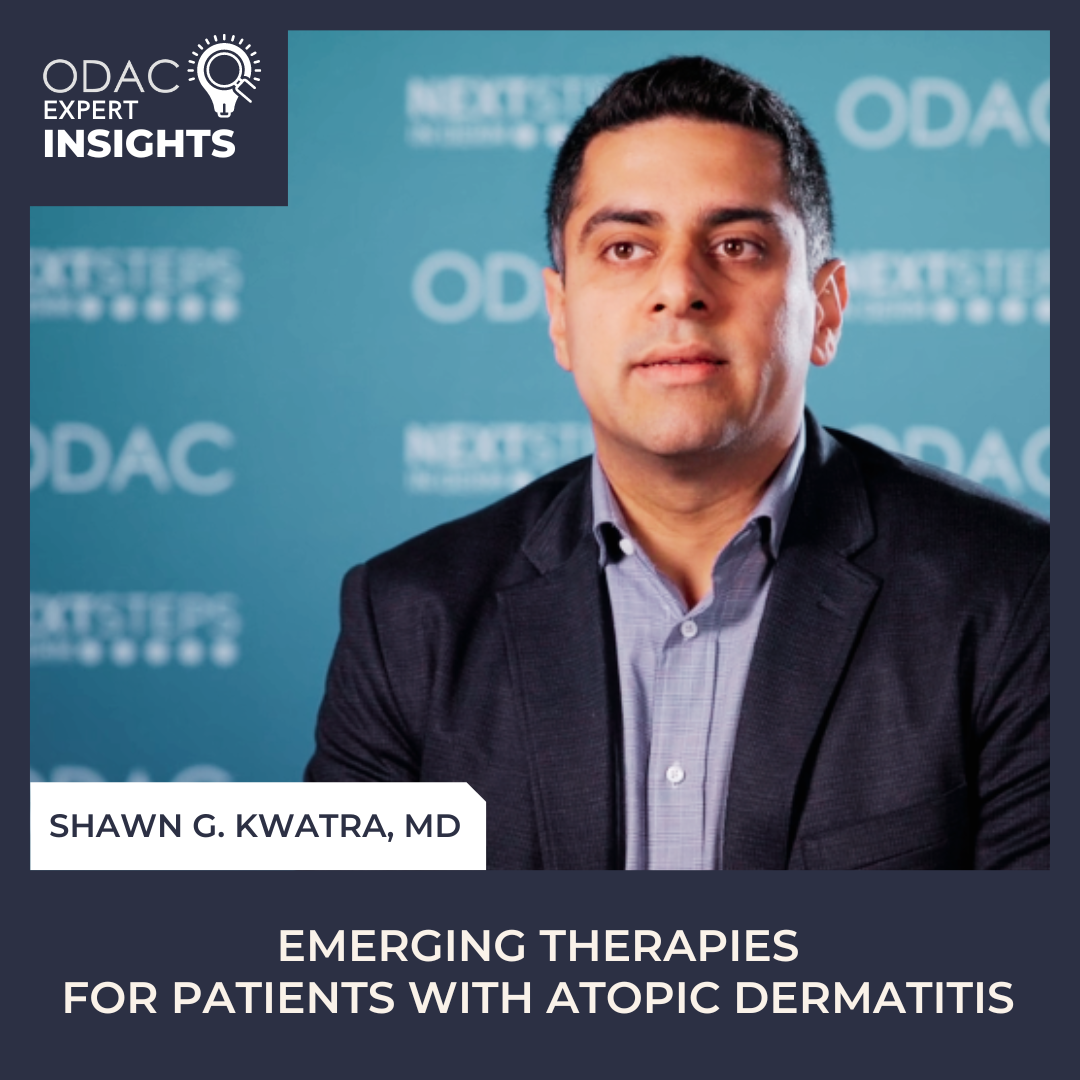It’s an exciting time for new therapies in atopic dermatitis with several therapies recently approved or in late-stage development. Next Steps in Derm, in partnership with ODAC Dermatology, Aesthetic & Surgical Conference, interviewed Baltimore dermatologist Dr. Shawn Kwatra, who outlined the new treatment options. From therapies that target IL-13 and IL-31 to JAK inhibitors, dermatology clinicians have more possibilities for their patients. Find out how oral JAK inhibitors compare in safety to other oral therapies. Plus learn why topical ruxolitinib may provide a safer and more effective treatment option compared with a topical steroid.
Further Reading
If you want to read more about atopic dermatitis, check out the following articles published in the Journal of Drugs in Dermatology:
Selection of Nemolizumab Clinical Dosage for Atopic Dermatitis
ABSTRACT
Nemolizumab is a monoclonal antibody directed against the interleukin-31 receptor A subunit, which is involved in the pathogenesis of pruritus and inflammation in atopic dermatitis (AD). Clinical trial results were combined with population PK (popPK) and pharmacokinetic/ pharmacodynamic (PK/PD) models to optimize nemolizumab dosing. Phase 1 and 2a clinical studies indicated that weight-based nemolizumab dosing reduced pruritus in patients with moderate-to-severe AD with good safety and tolerability even at the highest dose (3 mg/kg single dose and 2 mg/kg multiple doses). Nemolizumab PK profile was characterized by a slow absorption with peak serum concentrations reached 4.5-9.2 days post-dose, and a long terminal half-life ranging from 12.6 to 16.5 days. A change from weight-based dosing to flat dose was supported by an additional phase 2b study sponsored by Galderma. Flat dosing provides several practical advantages, including ease of preparation for self- or auto-injection and reduced chance of dosing errors. Doses of 10, 30, and 90 mg were selected based on popPK and PK/PD simulations to result in nemolizumab serum concentrations sufficient to achieve efficacy. Loading doses were administrated at the 2 lower doses in order to achieve target systemic concentrations from the first injection. The efficacy of Nemolizumab in improving cutaneous signs of inflammation and pruritus in AD and its safety profile, combined with popPK and PK/PD analyses, supported selection of the flat-dose regimen of 30 mg (with a 60 mg loading dose) given every 4 weeks subcutaneously for 16 weeks in the phase 3 ARCADIA studies sponsored by Galderma.
ABSTRACT
Background: Patients with atopic dermatitis (AD) need safe and effective topical treatments.
Objective: To assess safety and efficacy of roflumilast cream in patients with mild to moderate AD.
Methods: In this phase 2, proof of concept trial, patients (N=136) aged ≥12 years with AD were randomized to once-daily roflumilast cream 0.15%, roflumilast cream 0.05%, or vehicle cream for 4 weeks. Absolute change from baseline in Eczema Area and Severity Index (EASI) score at week 4 (primary endpoint), percentage change and responder rates, Validated Investigator Global Assessment-AD (vIGA-AD), and safety were assessed.
Results: At week 4, mean absolute changes in EASI were -6.4 (P=0.097 vs vehicle), -6.0 (P=0.356), and -4.8 with roflumilast 0.15%, roflumilast 0.05%, and vehicle, respectively. Significant improvements were observed for percentage change from baseline in EASI, patients reaching 75% improvement in EASI, and patients achieving vIGA-AD score of “clear” or “almost clear.” Treatment-related adverse events (AEs) occurred in 2 (2.2%) patients receiving roflumilast (mild rash and moderate application site pain). Only 1 (1.1%) patient receiving roflumilast discontinued study/drug due to an AE.
Limitations: Small number of patients.
Conclusions: Results support additional larger clinical trials of roflumilast cream to assess its potential as a once-daily, nonsteroidal topical AD treatment.
Did you enjoy this video interview? Find more here.

